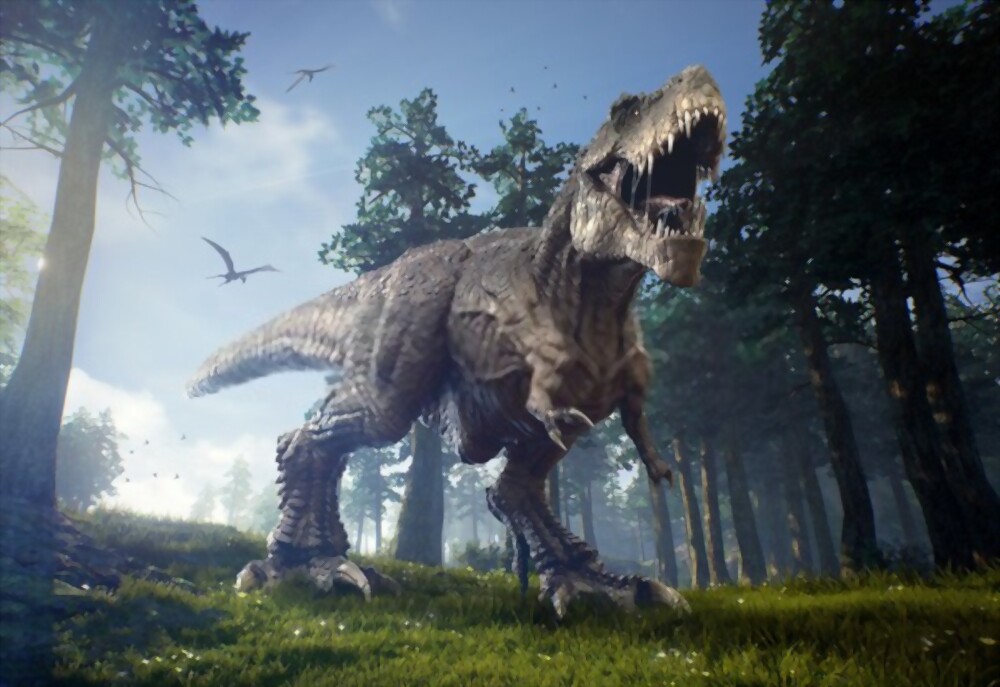New Research Finds That Tyrannosaurus Rex Used To Walk Surprisingly Slow
Tyrannosaurus rex was known to be a very menacing carnivore, however, it was surprisingly not fast. Actually, most human beings could effortlessly keep pace with the dinosaur.
Speed Of Tyrannosaurus Rex
According to Dutch paleontologists’ new calculations, T.rex would have covered just under 4.82 kilometers in an hour, a speed which is alike to that of human beings and many other animals, at its favorable walking speed. But, this speed is slower than the other estimates of the walking speed of the tyrant lizard king.
Reason For The Slow Pace
Most animals, including human beings, take on a natural walking speed that minimizes the amount of body energy spent especially when they find no reason to run.
Role Of T. Rex’s Tail
Earlier estimates had not taken completely into reckoning the role of the tail of T.rex which makes up more than half of its length when crunching the numbers, said Pasha van Bijlert who is the lead author of a new study on T.rex locomotion which got published in the journal Royal Society Open Science.
Reconstruction Of T. Rex’s Tail
Animals tend to choose walking speeds at which energy cost is minimum at a given distance. They do this by selecting distinct step rhythms at which their body parts resonate. Given that ligaments suspend the entire tail of T.rex, which behave like rubber bands, we reconstructed this tail to study at which step rhythm the tail of T.rex would resonate, stated by van Bijlert through email who is a graduate student in paleo-biomechanics at Vrije University Amsterdam.
The whole tail, by their reconstruction about 1,000 kilos, was really just a mass supported by a rubber band and with every single step, it would somewhat bounce up and down. With the correct rhythm, you get a good deal of movements for very little struggle.
Based on Trix, an adult 12-meter-long (39-foot-long) T. rex fossil at the Naturalis Biodiversity Center, a museum of natural history and research center in the Netherlands, the research team deliberated a step rhythm from a computer model of a T.rex tail. Then, the scientists increased the step rhythm by the step length found in fossilized tracks for an estimated standard walking speed of 4.60 kilometers per hour.
Role Of Other Parts Of T. Rex
Van Bijlert said, other methods mostly focus on calculations based on the hips and legs. They surely play a critical role in estimations, but calculations based only on these parts of a dinosaur’s anatomy may lead to inaccurate outcomes. That’s because T.rex and many other dinosaurs had peculiar tails that aren’t detected with any other living animals today.
Identical To Animals’ Walking Speed Today
Grasping on how a top predator like T. rex moved can help paleontologists better understand the dinosaur’s ancient ecosystems, and behavior, answering questions like what amount of food did it need to move that huge body at such a speed? How far would it have wandered to find prey?
For example, a T.rex would use its desired walking speed when walking toward a water source, van Bijlert stated. This might also give us an idea of what kinds of ranges it could traverse when looking for food.
He did not calculate the T.rex’s maximum speed in this research but devise to do so using the same technique in the future.
Top Speed Of T. Rex
Other researchers have investigated the dinosaur’s running abilities and demonstrated that it could have a top speed of between 19.31 kilometers per hour and 28.96 kilometers per hour, any faster and the bones may have disintegrated.
Importance Of Tail
John Hutchinson, a professor of evolutionary biomechanics at the Royal Veterinary College in London said that the function played by tails had been a neglected subject in dinosaur locomotion research.
T. Rex Was Not A Fast
He stated through email that what speed huge tyrannosaurs might have normally walked at hasn’t been a big query for many studies, but it is still an intriguing question. The approach used here is complementing to fancier muscle-based simulation investigation and, in a way, to data from fossil footprints.
He further added in his emails that humans, elephants, horses, giraffe, and ostriches all have an exceptionally close distribution in preferred speeds (around 3.5 – 4.9 kph). Thus, this consists of both two- and four-legged animals, and also both remarkably large and small animals.
The fascinating thing is that our new procedure calculates slower walking speeds for T.rex than other procedures, nonetheless the speed that we find is similar to many animals living today.

